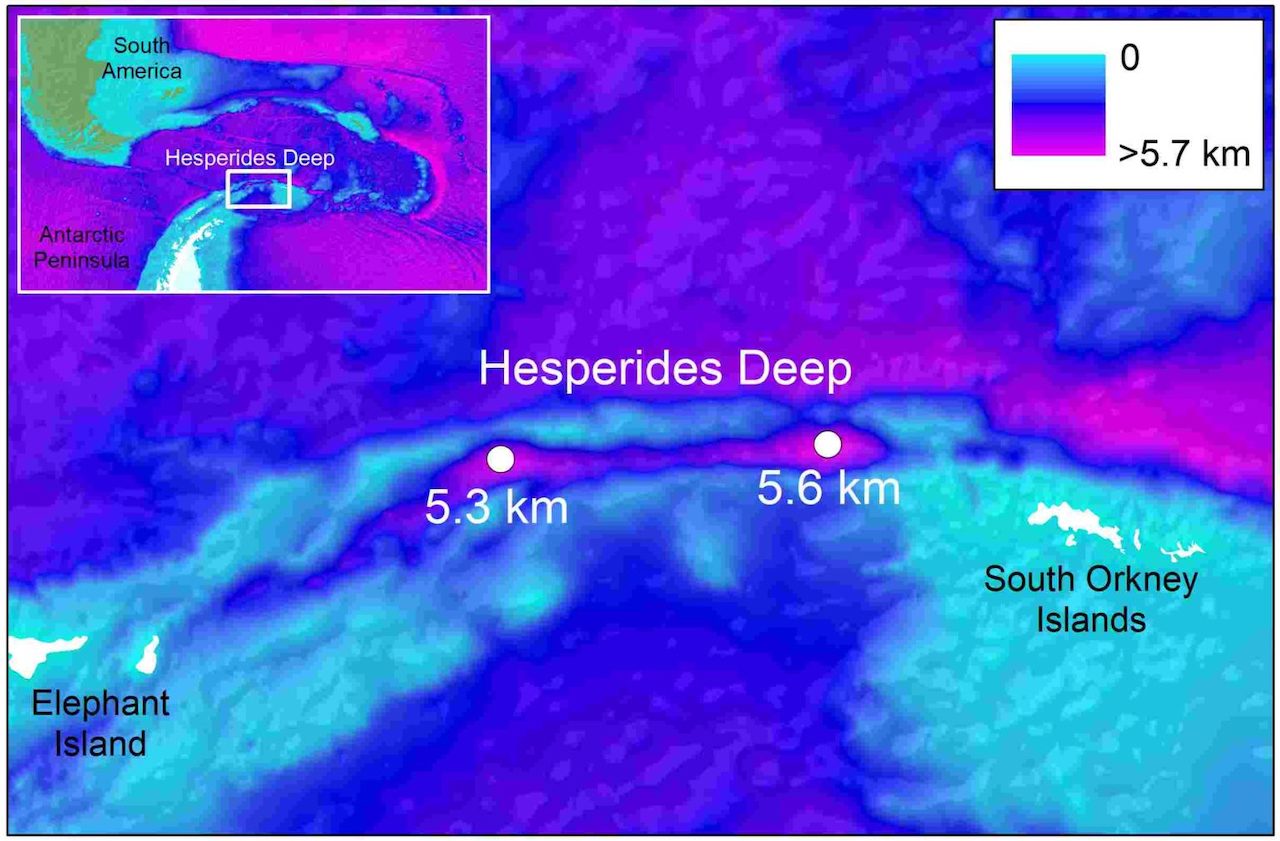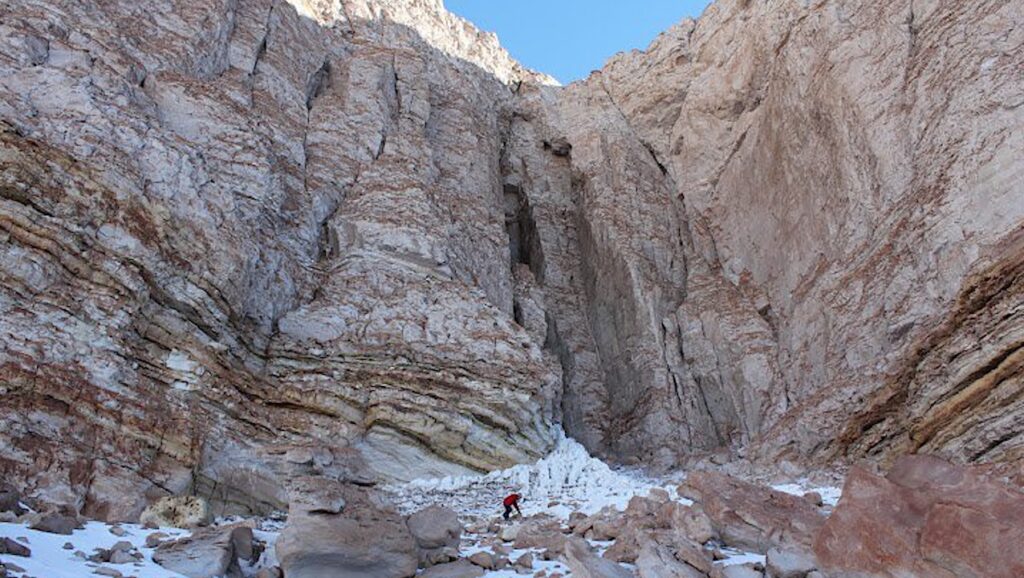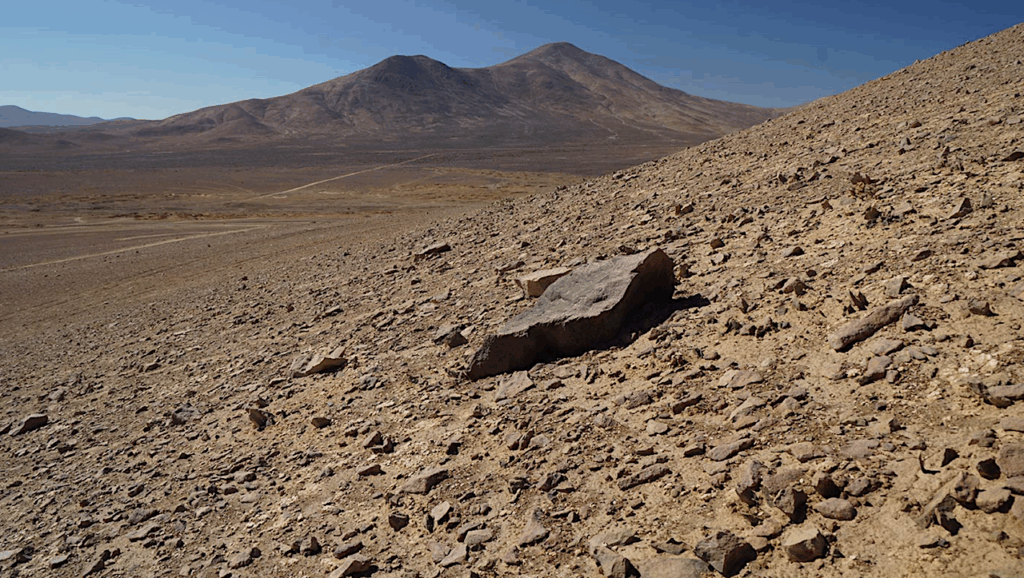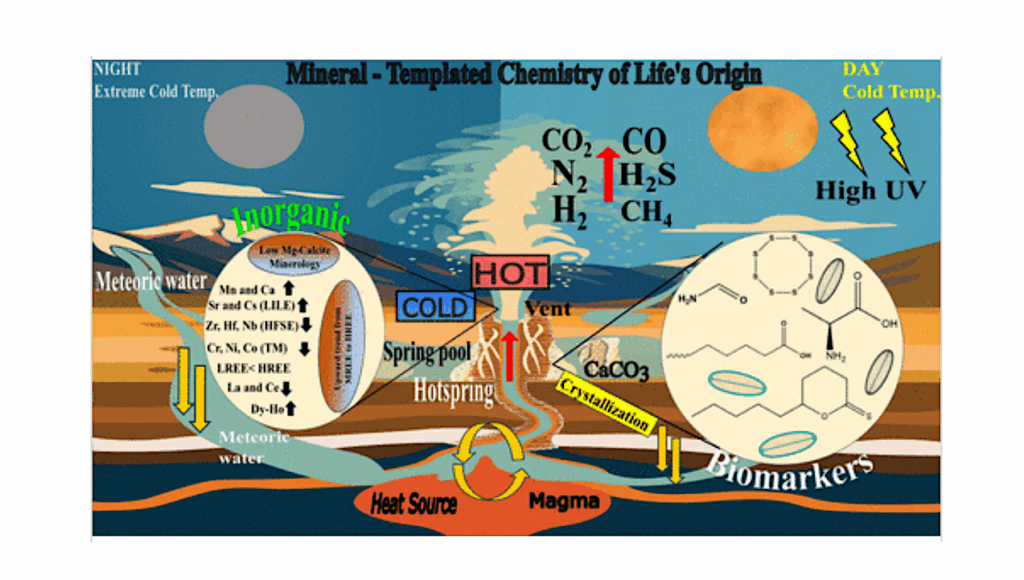Away Team Report: Exploring Life In Earth’s Antarctic Abyss

We are marine biologists that study seafloor creatures, Jamie is doing a PhD investigating Antarctic sea spiders in the University of Galway and Huw works at British Antarctic Survey (BAS).
Both of us regularly work at sea, and whilst this is Huw’s 7th trip to Antarctica and Jamie’s first trip, neither of us had ever set foot on the RRS Sir David Attenborough before joining the Polar Waters Science Trials cruise. We are on board for two months to test the new ship’s deep sea sampling capabilities and to collect samples for the new NERC BIOPOLE project.
For our work we chose the Hesperides Deep, one of the deepest and least explored parts of the Antarctic seafloor. The Hesperides Deep has two basins that are 5.6 km (3.5 miles) deep, to put that into context only 6% of the Southern Ocean is this deep or deeper. To our knowledge, nobody has ever collected animals or images from this abyssal area before.
Using a range of equipment, we set about trying to understand and explore this unique habitat. We deployed up to 7.6 km (4.7 miles) of cable at a time (over 100 km/62 miles in total over 5 days) to lower two camera systems, two types of small seafloor trawl and the CTD to the bottom of the ocean.

Working in the deep sea requires a lot of patience and pragmatism. Each deployment can take more than six hours, compared to half an hour in 200m of water, and there is no guarantee (as we discovered on several occasions) that there will be anything in the net at the end. We really embraced the theme of testing the RRS Sir David Attenborough‘s abilities to sample these extreme environments, with winches paying out more cable than ever before and our equipment sometimes needing welding, replacement parts and repairs to the nets between deployments!
The crew and scientists made a huge effort to ensure that we made the most of this opportunity, with the ship conducting science 24 hours a day for 5 days, only pausing for a few hours for a storm to blow through! Thanks to everyone’s hard work, we were able to sample and get images from both basins, while demonstrate the RRS Sir David Attenborough‘s abilities with the deepest trawling ever done on a BAS ship anywhere in the world.
In such deep environments, that are dominated by cold temperatures, extreme pressure and very little food, life can be sparse. So, before work started, we had to manage the expectations of the non-biologists on board, even describing what we might find as “blobs of snot or nothing at all”. However, the trawls and cameras revealed a seafloor of soft mud and sharp stones inhabited by a range of weird, wonderful and fascinating creatures.
Full report at BAS
Astrobiology








